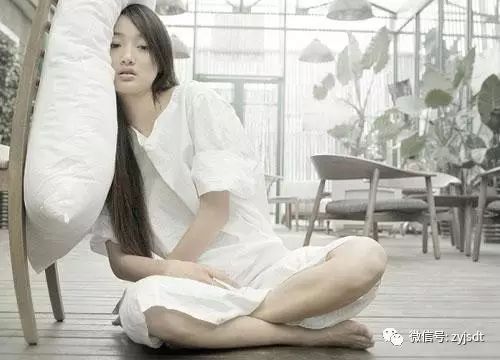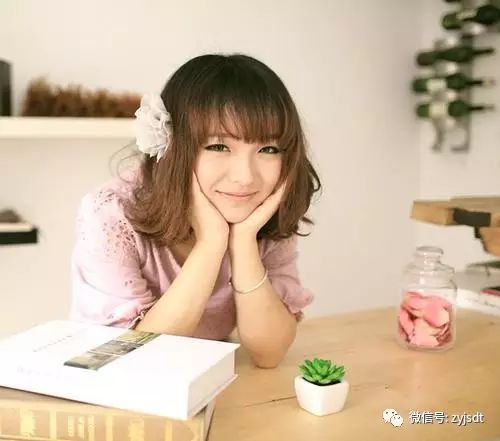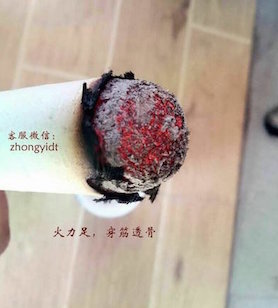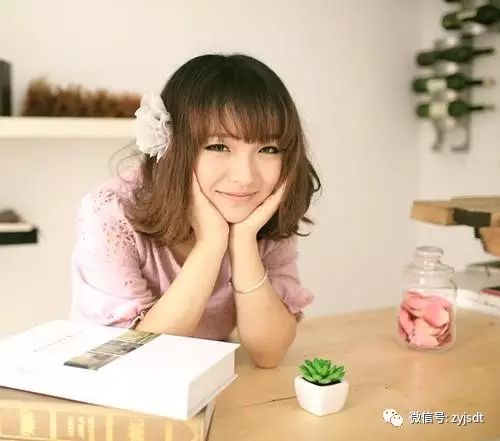When the flow of Qi and blood is obstructed, women are prone to accumulate coldness in their bodies. There is a saying that “nine out of ten women are cold.” Women with cold bodies who do not receive proper care year-round may experience various issues. The uterus inevitably becomes cold, leading to what we call “cold in the uterus” (gong han). Cold in the uterus can cause numerous ailments, including irregular menstruation, dysmenorrhea, pale complexion, waxy yellow skin, dark circles, hair loss, insomnia with vivid dreams, palpitations, shortness of breath, dizziness, fatigue, and acne. However, the most concerning issue is infertility! Or, if pregnancy occurs, fetal development may be delayed! You may wonder why cold in the uterus leads to such severe infertility. The reason is quite simple: the uterus, as a vital organ for nurturing the fetus, cannot support healthy growth if it is cold, much like trying to plant seeds in cold, nutrient-deficient soil. Many women are unaware of how to maintain their health; the only solution is to nourish your Qi and blood, care for the cold in the uterus, and regulate menstruation!

Speaking of Qi and blood deficiency, Chinese herbal medicine can effectively tonify Qi and nourish blood. For Chinese women, there are several herbs specifically prepared for them in herbal shops, such as Shao Yao (Paeonia lactiflora), Chuan Xiong (Ligusticum chuanxiong), Dang Gui (Angelica sinensis), and Shu Di Huang (Rehmannia glutinosa). When these four herbs are boiled together, they create a formula with over a thousand years of history, known in the TCM community as the “first formula for nourishing blood in gynecology,” called Si Wu Tang (Four Substance Decoction). The best way to replenish blood is to drink Si Wu Tang every morning and evening starting from the day after menstruation ends, for a week. I will write down the recipe here, hoping it can help sisters who are troubled by these issues.
Ingredients: Standard Si Wu: Dang Gui, Shu Di, Chuan Xiong, Bai Shao, each 15g.
Method: Rinse all the herbs once, then add water and simmer.
Tips: Use a medium-sized rice bowl to measure 4 bowls of water, and simmer until only one bowl of water remains! Adding high-quality red dates will definitely make the soup sweeter. Of course, it is best to add an appropriate amount of blood-nourishing black sugar when drinking, which will enhance the effect.
Usage: Drink on an empty stomach in the morning and evening; any temperature is fine, but it is best not to let the herbs sit overnight before boiling again.
As long as you consume it for a week after menstruation ends, once in the morning and once in the evening, and continue for several menstrual cycles, your complexion will improve significantly, dysmenorrhea will disappear, and the cold in the uterus will gradually be nourished!
Introduction to the Four Main Ingredients
Dang Gui: The primary function of Dang Gui is to nourish blood and regulate menstruation. Additionally, it has the effect of beautifying the skin and plays an extremely important role in protecting women’s health.
Shu Di: It can address pale complexion, dizziness, and irregular menstruation in women. When combined with Dang Gui, it enhances the blood-nourishing and blood-activating effects of Dang Gui.
Chuan Xiong: It is a primary herb for gynecology and an excellent remedy for headaches. It can also influence the endocrine system, alleviating breast discomfort, anxiety, and depression associated with premenstrual symptoms.
Bai Shao: According to the “Tang Bencao,” it “benefits women’s blood.” Modern TCM believes it can nourish blood and soften the liver, making it effective for irregular menstruation.
Why Should Women Drink Si Wu Tang?
Si Wu Tang not only helps to invigorate blood circulation and eliminate blood stasis but also alleviates menstrual pain, improves anemia, and prevents cold hands and feet.
Si Wu Tang is also a beauty elixir because it promotes smooth Qi and blood flow. Regular consumption can lead to a rosy complexion, smoother skin, and a more youthful appearance!
Si Wu Tang is a commonly used formula that nourishes blood and regulates menstruation. Those with blood deficiency can use it to replenish blood, while those with blood stasis can use it to invigorate blood. In our daily lives, many women are affected by irregular menstruation, and Si Wu Tang can help invigorate blood circulation, eliminate blood stasis, and alleviate abdominal bloating and pain, ensuring smooth menstrual flow. Additionally, Si Wu Tang can supplement iron, reducing anemia, dizziness, and menstrual flow issues during menstruation.
Furthermore, Si Wu Tang can moisturize the skin and prevent aging. The components of Si Wu Tang are primarily warming and blood-activating agents. If taken regularly under a doctor’s guidance, it can help ensure smooth Qi and blood flow, reduce cold hands and feet, and promote a rosy complexion and smooth skin, slowing down physiological aging and making one appear younger.

Best Timing for Taking Si Wu Tang
Many people choose to take it in autumn and winter. However, this does not mean that Si Wu Tang cannot be consumed in other seasons; it is simply more suitable during autumn and winter compared to other tonics. Here, we will detail when to drink Si Wu Tang.
Regarding when to drink Si Wu Tang, there is a saying: autumn supplementation lays the foundation for winter nourishment. Therefore, in autumn, it is essential to strengthen the spleen and stomach, gradually restoring the body that has been depleted during summer to prepare for winter nourishment. Additionally, autumn is a time to adjust the functions of the organs and enhance the body’s resistance to adapt to the gradually cold climate, preventing winter illnesses. At this time, one can choose a method that nourishes both Qi and blood to help ensure smooth Qi and blood flow and promote organ function.
Women should develop the habit of taking Si Wu Tang from a young age, consuming it for 10 consecutive days after menstruation ends each time. This not only reduces menstrual pain, menstrual flow issues, and abdominal bloating but also helps maintain physiological functions and skin health, making it less prone to aging in old age, and naturally distancing oneself from cancer. Additionally, Si Wu Tang can be stewed with chicken, pig stomach, or eel, making it a delicious and beneficial dish for women.
However, this does not mean that it cannot be consumed at other times. In fact, for daily use, when should Si Wu Tang be consumed? We can find the answer from our own experiences. For example, as women take on more social responsibilities, physical and psychological stress increases, making blood-nourishing and anti-aging methods essential. During times of high stress, it is important to remember Si Wu Tang for nourishment. This is one of the answers to when to drink Si Wu Tang. When feeling physically exhausted or weak, especially under significant stress, Si Wu Tang can be used for nourishment.
One important function of Si Wu Tang is to regulate menstruation. Therefore, when regulating menstruation, when should it be consumed? It is important to note that Si Wu Tang contains Dang Gui, so it should not be consumed casually during menstruation; it is best taken after menstruation ends or before it begins! It is said that drinking Si Wu Tang on the 11th, 12th, or 13th day after menstruation ends can also have excellent breast-enhancing effects.
Precautions
1. Nourishing the body and enhancing beauty: You can use Si Wu Tang as a seasoning, masking the strong herbal taste with red dates, goji berries, and rock sugar, and adding chicken or pork to create a nourishing medicinal dish that helps ensure smooth Qi and blood flow, resulting in a rosy complexion and smooth skin, nourishing the body and enhancing beauty.
2. Menstrual period regulation: Women in Taiwan commonly use “Si Wu” to nourish their bodies. Celebrities like Da S and Wu Peici highly recommend Si Wu Tang. You can drink Si Wu Tang after your menstrual period ends, once in the morning and once in the evening, for a week to help nourish blood and restore the body.
3. Improving excessive menstrual flow: Si Wu Tang is the ancestral formula for nourishing blood, from which countless variations have emerged, including the well-known Tao Hong Si Wu Tang, which adds Tao Ren (Peach Kernel) and Hong Hua (Carthamus tinctorius) to specifically treat excessive menstrual flow caused by blood deficiency and stasis, and can also address threatened miscarriage and habitual miscarriage.
4. Different methods of consumption require different dosages of Si Wu Tang. Lastly, I want to emphasize that when it comes to nourishing Qi and blood and addressing women’s issues, aside from Si Wu Tang, a simpler method is to use our moxa sticks. Based on three-year-aged moxa, we add Hong Hua, Shan Jia, and Chuan Xiong, all of which are considered “sacred herbs for gynecology.” They have higher heat and stronger penetration, and when combined with specific acupoints, the effects are naturally better! For more details, click on the “Read the original article” link below.
Currently available in diameters of 2.0 cm and 3 cm (length is 20 cm).

Differences between medicinal moxibustion and pure moxibustion:
1. Medicinal moxibustion uses multiple formulas, while moxibustion is relatively singular.
2. Medicinal moxibustion is targeted, while moxibustion does not focus on specific areas.
3. Medicinal moxibustion generally shows effects after one session, while moxibustion takes longer to show effects.
By the way, I haven’t mentioned the acupoints yet. For moxa sticks, the acupoints include: Pi Shu (Spleen Shu), Gan Shu (Liver Shu), Shen Shu (Kidney Shu), Shen Que (Ren 8), Bai Hui (GV 20), Zu San Li (ST 36), and San Yin Jiao (SP 6). Each acupoint should be treated for 10 minutes, once a day, for a 10-day course. Remember to follow the order!

